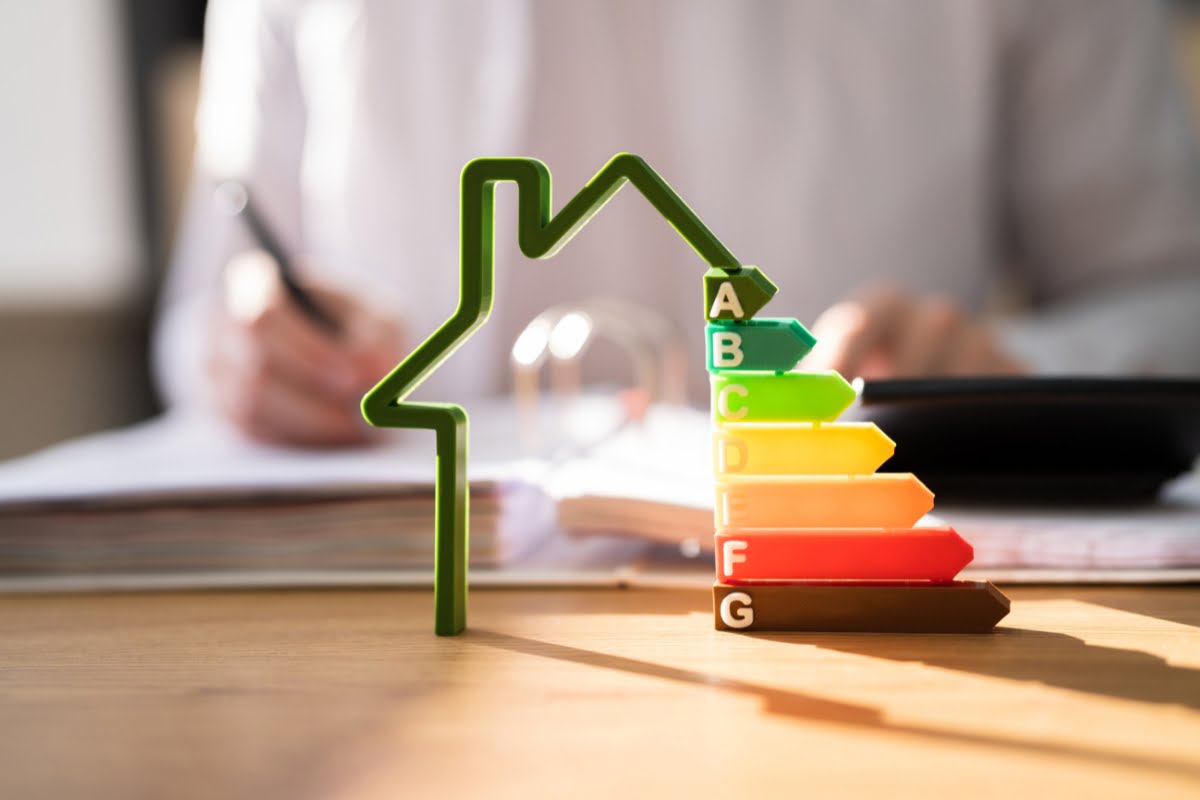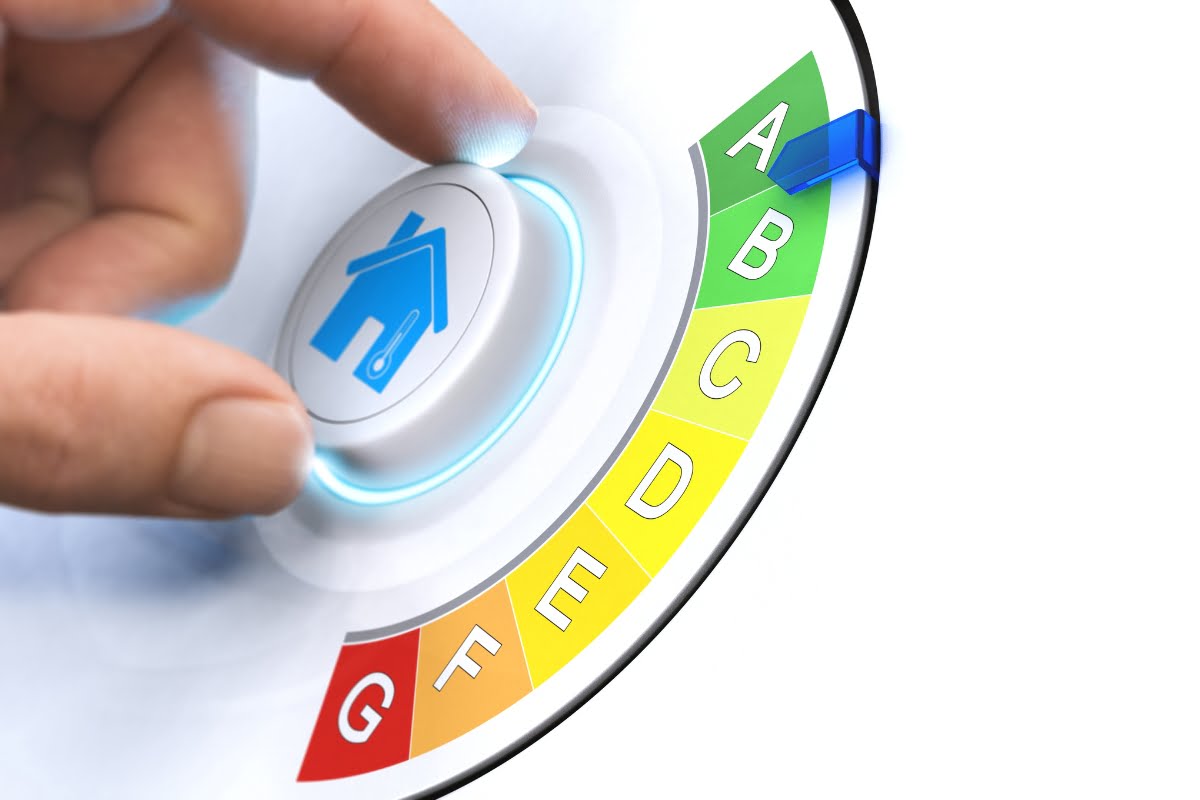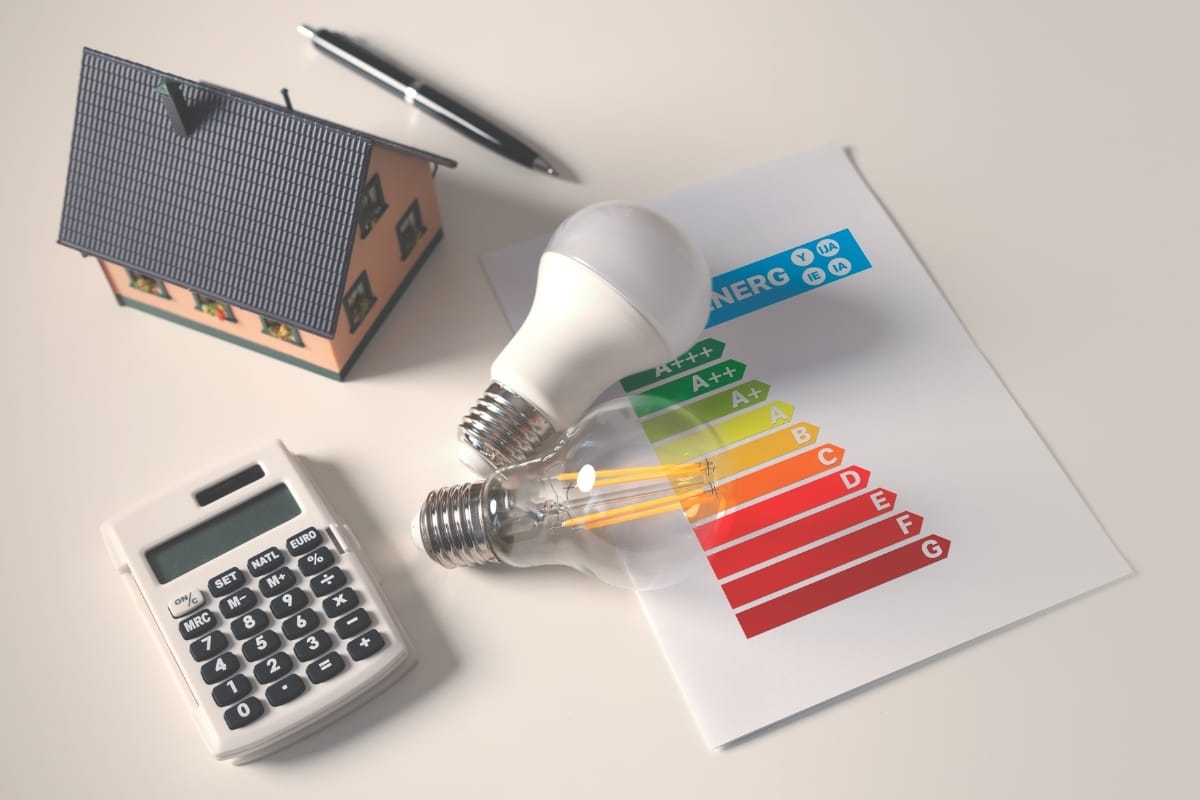Transforming your living space into an energy-efficient haven not only benefits the environment but also leads to significant savings on utility bills and improved comfort. As awareness of sustainability grows, more homeowners are exploring ways to enhance the energy efficiency in homes.
From simple upgrades like LED lighting and programmable thermostats to comprehensive solutions such as solar panels and advanced insulation, there are numerous strategies to reduce energy consumption and minimize your carbon footprint.
In this guide, we’ll delve into various energy efficiency measures, offering practical tips and insights to help you create a greener, more cost-effective living space. Whether you’re embarking on a renovation or looking to make small changes, get ready to discover how energy efficiency can transform your home and contribute to a more sustainable future.
Energy-Efficient Home: How to Save Energy and Cut Costs?
The Importance of Energy Efficiency

A high efficiency home is not just a passing trend; it is a crucial aspect of sustainable living. With the increasing demand for energy and the environmental impact of traditional energy sources, it has become imperative to find ways to reduce our energy consumption. By making our homes more energy-efficient, we can not only save money on utility bills but also contribute to a greener future.
One of the key benefits of efficiency in your home is the reduction in energy consumption. When we use energy-efficient appliances and implement smart solutions, we can significantly decrease the amount of electricity and gas required to power our homes. This not only reduces our carbon footprint but also helps conserve natural resources.
Another advantage of efficiency is improved comfort. By properly insulating our homes and using efficient heating and cooling systems, we can maintain a comfortable indoor temperature throughout the year. This means no more drafty rooms or excessive heat during summer months, resulting in a more pleasant living environment.
Understanding Energy Consumption: Where Your Home’s Energy Goes

When it comes to understanding energy consumption in our homes, it’s essential to know where exactly all that energy is being used. By delving into the breakdown of energy usage and the home energy score, homeowners can identify areas where improvements can be made to enhance efficiency.
Heating and cooling systems typically account for a significant portion of a home’s energy consumption. During the colder months, heating can be a major home energy drain, while air conditioning is the primary culprit in the warmer seasons. Ensuring that your HVAC system is well-maintained and operating efficiently can lead to substantial energy savings.
Another key area to consider is lighting. Traditional incandescent bulbs are notorious for their high energy consumption. Switching to energy-efficient LED bulbs can make a noticeable difference in reducing electricity usage. Additionally, implementing smart lighting systems that allow for better control over when and how lights are used can further optimize efficiency.
Appliances and electronics also play a substantial role in energy consumption within homes. From refrigerators to televisions, these devices can add up to a significant portion of your energy bill. Opting for energy-efficient appliances and unplugging electronics when not in use are simple yet effective ways to curb energy wastage.
Furthermore, insulation and sealing gaps in windows and doors are crucial for maintaining a comfortable indoor temperature without overtaxing heating or cooling systems. Proper insulation helps retain heat during winter and keep the home cool in summer, reducing the need for constant adjustments to the thermostat.
Smart Thermostats: Revolutionizing Climate Control

Smart thermostats are at the forefront of revolutionizing climate control in homes today. These innovative devices offer homeowners the ability to regulate and optimize their energy usage efficiently. Energy efficiency is becoming increasingly important, and smart thermostats play a significant role in achieving this goal.
By incorporating a smart thermostat into your home, you can take control of your heating and cooling systems with precision. These devices use advanced technology to learn your preferences and adjust the temperature accordingly, ensuring comfort while minimizing energy waste. Energy efficiency is not only good for the environment but also for your wallet in the long run.
One of the key advantages of smart thermostats is their ability to be controlled remotely. Whether you’re at work or on vacation, you can easily manage your home’s climate settings through a smartphone app. This level of control contributes to greater energy savings by allowing you to adjust temperatures based on your schedule.
In addition to remote access, many smart thermostats come equipped with features like geofencing, learning algorithms, and energy usage reports. These functions provide valuable insights into your energy consumption patterns, empowering you to make informed decisions to further enhance efficiency in the home.
The integration of smart thermostats is a practical and effective way to transform your living space into an energy-efficient environment. With the growing emphasis on sustainability and cost savings, investing in smart climate control technologies is a step towards a greener and more efficient future.
Energy-Efficient Appliances: Investing in Sustainability

When it comes to energy efficiency, upgrading to energy-efficient appliances is a smart investment. From refrigerators and dishwashers to washing machines and televisions, modern appliances offer significant energy savings compared to their older counterparts.
The key factor to consider when purchasing new appliances is their ENERGY STAR home rating. ENERGY STAR-certified products meet strict guidelines set by the Environmental Protection Agency (EPA) for efficiency. These appliances not only consume less electricity but also perform optimally, ensuring that you don’t have to compromise on functionality or convenience.
In addition to saving money on utility bills, using extremely energy efficient appliances reduces greenhouse gas emissions associated with electricity generation. By choosing sustainable options for your home, you contribute towards a cleaner environment and a more sustainable future.
Lighting Solutions for Extremely Energy Efficient Living Spaces

When it comes to creating an environmentally friendly living space, focusing on lighting solutions is key. Efficient energy homes not only help reduce electricity bills but also minimize the carbon footprint. By exploring different lighting options, you can transform your living space into a sustainable and eco-friendly environment.
LED lighting is a popular choice for energy-efficient homes. LED bulbs consume significantly less energy compared to traditional incandescent bulbs, making them a cost-effective option for long-term use. Consider replacing old light fixtures with LED bulbs to reduce energy consumption and lower your electricity costs.
Natural light is another excellent way to enhance efficiency. Maximize natural light by strategically placing windows and skylights to reduce the need for artificial lighting during the day. Sunlight not only brightens up your living space but also provides a natural and refreshing ambiance.
Dimmer switches are a simple yet effective lighting solution for energy-efficient living spaces. By adjusting the brightness of your lights, you can control the amount of energy consumed based on your needs. Dimmer switches help create the perfect lighting atmosphere while saving electricity.
Smart lighting systems are a modern and innovative approach to efficiency. These systems allow you to control your lighting remotely through a smartphone or smart home device. You can schedule lights to turn on and off at specific times, adjust brightness levels, and even change light colors, all while optimizing energy usage.
Incorporating motion sensor lights is a practical way to save energy in your living space. Motion sensor lights automatically switch on when they detect movement and turn off when the area is vacant. This not only helps conserve energy but also adds a layer of security to your home.
Sustainable Building Materials: Paving the Way for Greener Homes

When constructing or renovating a home, choosing sustainable building materials is an essential step towards achieving efficiency. Sustainable materials are sourced responsibly and have a lower environmental impact compared to traditional options.
For example, using reclaimed wood for flooring or furniture not only adds character to your home but also reduces deforestation and carbon emissions associated with new timber production. Similarly, opting for recycled glass countertops or tiles minimizes waste and conserves natural resources.
In addition to sustainable materials, it is crucial to consider proper insulation during construction. Insulation helps regulate indoor temperatures by preventing heat transfer through walls, floors, and roofs. This reduces reliance on heating and cooling systems while maintaining a comfortable living environment.
Insulation and Weatherization: Enhancing Power Efficiency

A well-insulated home is key to maximizing efficiency. Insulation acts as a barrier against heat loss during winter months and heat gain during summer months.
The most common areas where insulation is applied include walls, attics, basements/crawl spaces, and floors. By ensuring these areas are properly insulated, you can significantly reduce energy waste and create a more comfortable living space.
Weatherization is another crucial aspect of enhancing power efficiency. Sealing air leaks around windows, doors, and other openings prevents drafts and heat loss. Weatherstripping and caulking are simple yet effective techniques that can make a noticeable difference in reducing energy consumption.
Harnessing Solar Power: Renewable Energy for Your Home

Solar power is a renewable energy source that offers numerous benefits for homeowners seeking to enhance their power efficiency. By harnessing the power of the sun, you can generate electricity to power your home while reducing reliance on traditional grid-based electricity.
Solar panels installed on rooftops or in open spaces capture sunlight and convert it into usable electricity through photovoltaic cells. This clean energy source not only reduces your carbon footprint but also provides long-term financial savings by offsetting or even eliminating your electricity bills.
Advancements in solar technology have made it more accessible and affordable for homeowners to adopt this sustainable solution. Additionally, many governments offer incentives such as tax credits or rebates to encourage the installation of solar panels, making it an even more attractive option.
Monitoring and Managing Energy Usage: Tools for Sustainability

To truly embrace power efficiency, it is essential to monitor and manage our energy usage effectively. Fortunately, there are various tools available that can help us achieve this goal.
Smart meters provide real-time information about our electricity consumption, allowing us to identify areas where we can reduce usage. By understanding how different appliances contribute to our overall consumption, we can make informed decisions about when and how we use them.
Energy monitoring apps also play a significant role in managing our energy usage. These apps provide insights into daily or monthly consumption patterns, helping us track our progress and set goals for reducing energy waste.
Conclusion: Embracing a Greener Future for Your Living Space
Home energy efficiency is not just a passing trend; it is a necessity in today’s world. By implementing smart solutions, using energy-efficient appliances, and embracing sustainable building practices, we can transform our living spaces into eco-friendly havens.
Transforming your living space with energy-efficient solutions not only enhances comfort but also significantly reduces your energy bills. For expert guidance and top-notch remodeling services, choose FD Remodeling Company. Our team is dedicated to creating sustainable, stylish, and efficient homes tailored to your needs.
Contact us through our website form or call 404-857-5582 to start your journey towards a more energy-efficient home. Let FD Remodeling Company help you achieve the perfect blend of style and sustainability.



























